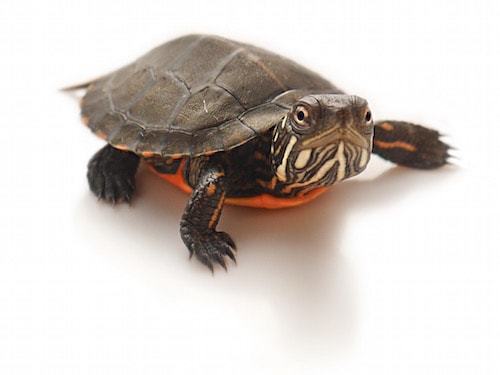Eastern painted turtles are omnivores that feed on insects and plants in the wild. They accept a variety of food items such as mealworms and crickets for sustenance.
In captivity, these turtles prefer pelleted foods and protein-rich foods like pellets. Additionally, they enjoy fruits, vegetables, and some fish as a treat.
Contents
Diet
Painted turtles are omnivores and feed on aquatic insects, small vertebrates such as fish and frogs, carrion and plant materials. Additionally, they have the capacity to consume snails and small animals like crayfish.
Wild painted turtles primarily feed on insect prey. As they age, however, they begin to consume more aquatic plants and their larvae, invertebrates and carrion.
Adult painted turtles can be fed a combination of meat and plant foods, but tend to favor nutrient-rich turtle pellets which meet their dietary needs. This type of diet provides an optimal balance of protein, fat and calcium.
Your eastern painted turtle should receive a nutritious diet that includes fresh, low-fat vegetables and fruits such as lettuce, water lettuce, hyacinth, duckweed, greens like romaine lettuce and parsley. They will also accept commercially purchased turtle pellets that meet their specific nutritional requirements.
Habitat
Eastern painted turtles can be found across North America in ponds, marshes and slow-moving streams. To keep them happy and healthy, Eastern painted turtles need large enclosures with plenty of swimming space, basking areas and underwater vegetation.
These turtles are omnivores and enjoy a wide variety of foods. You can provide them with fruits, vegetables, fresh water fish, insects and worms to name just a few.
Painted turtles are notoriously hardy creatures, capable of living outdoors year-round in most climates. However, they may become ill in cold temperatures so if you plan to keep them outdoors during the winter, be mindful that this could pose a risk.
They mate in the springtime, with females traveling a great distance – often crossing roads – to dig nests where their eggs will be laid. Males follow them to a pond and then perform an elaborate mating ritual, waving their front claws as a sign that they are interested.
Temperature
Painted turtles have been known to survive cold temperatures in their natural environment. Some even go so far as to swim beneath ice floes!
In a controlled environment, fish require air temperatures between 88-94 degrees Fahrenheit and water temperatures between 70-76 degrees F. To achieve these temperatures, use a basking lamp and an accurate aquarium thermometer.
Reptiles can benefit from UVB lighting, which can be achieved by positioning a heat lamp near an open window.
For maximum safety and enjoyment, create an enclosure where the turtle can bask in the sun’s UV rays. A Waterland tub can be used for this purpose; however, a separate pond is highly recommended for added fun and safety.
Care
Eastern painted turtle food should consist of various vegetables, fruits and grains to provide protein and calcium.
Wild painted turtles eat a variety of insects and plants. Additionally, they consume small fish they catch from the water or shore.
Baby painted turtles may eat crayfish and injured fish, making them suitable pets if given a nutritious diet and suitable habitat.
Two to three times per week, they should be provided with a high quality aquatic turtle pellet containing meaty fish and veggies in an balanced meal. You can also give them crickets or other treats occasionally.


